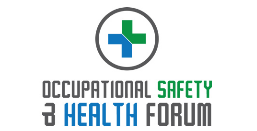Workplace wellbeing has risen to the forefront of organisational priorities, heralding a transformative approach to occupational health and safety (OHS). The recent trends in this domain are shaped by a holistic understanding of wellness, acknowledging that employee health extends beyond physical safety to encompass mental and emotional wellbeing.
Mental Health Awareness
There has been a sea change in the recognition of mental health as a critical component of workplace wellbeing. Initiatives like Mental Health Awareness Week and campaigns by organisations such as Mind have amplified this focus. Employers are now more attuned to the stressors that affect mental health, and proactive mental health strategies have become embedded in the OHS discourse. This includes offering access to counseling services, stress management workshops, and creating environments that encourage open conversations about mental health.
Flexible Work Arrangements
The adoption of flexible working arrangements has been catalysed by the COVID-19 pandemic, but the trend is here to stay. The link between work-life balance and wellbeing has solidified the case for flexible hours and remote working capabilities. Employers have recognized that granting employees greater control over their work arrangements can lead to reduced stress levels and higher job satisfaction, thereby positively influencing overall health and safety outcomes.
Ergonomic Workspaces
As the workforce spends considerable time at their desks, ergonomics has become an essential consideration. The integration of ergonomic furniture and the promotion of regular breaks to reduce sedentary behavior demonstrate a commitment to preventing musculoskeletal disorders. Moreover, the layout of workspaces now often considers natural lighting and greenery, which have been shown to improve mood and wellbeing.
Health and Fitness Programmes
Investment in employee health programmes has grown, with many UK businesses offering gym memberships, fitness classes, and wellness challenges to encourage a healthier lifestyle. These programs are no longer seen as perks but as strategic investments in employee health, potentially reducing sick leave and increasing productivity.
Training and Development
A trend that acknowledges the link between personal development and wellbeing is the emphasis on continuous learning and growth opportunities. Providing training and professional development has been shown to increase employee engagement and satisfaction, which are integral to a positive workplace culture and, by extension, a safe working environment.
Preventative Health Measures
The shift towards preventative health care in the workplace is also notable. Regular health screenings, vaccination programs, and health education signify a proactive approach to health and safety, aiming to address potential health issues before they escalate.
Employee Assistance Programs (EAPs)
EAPs have become more commonplace, offering support for various issues that may affect employees’ performance and wellbeing, including financial advice, legal assistance, and psychological support. These programs underscore the notion that employee wellbeing is multifaceted and requires a range of supportive interventions.
The recent trends in workplace wellbeing in the UK emphasise a comprehensive view of health that encompasses physical, mental, and emotional aspects. This perspective has reshaped modern approaches to OHS, leading to environments where safety is not merely about preventing accidents but also about nurturing the overall wellbeing of the workforce. As businesses continue to evolve their strategies, the wellbeing of employees stands as both a moral imperative and a critical component of organisational success.
Are you assessing Workplace Wellbeing solutions for your business? The Occupational Safety & Health Forum can help!
Photo by Lina Trochez on Unsplash







